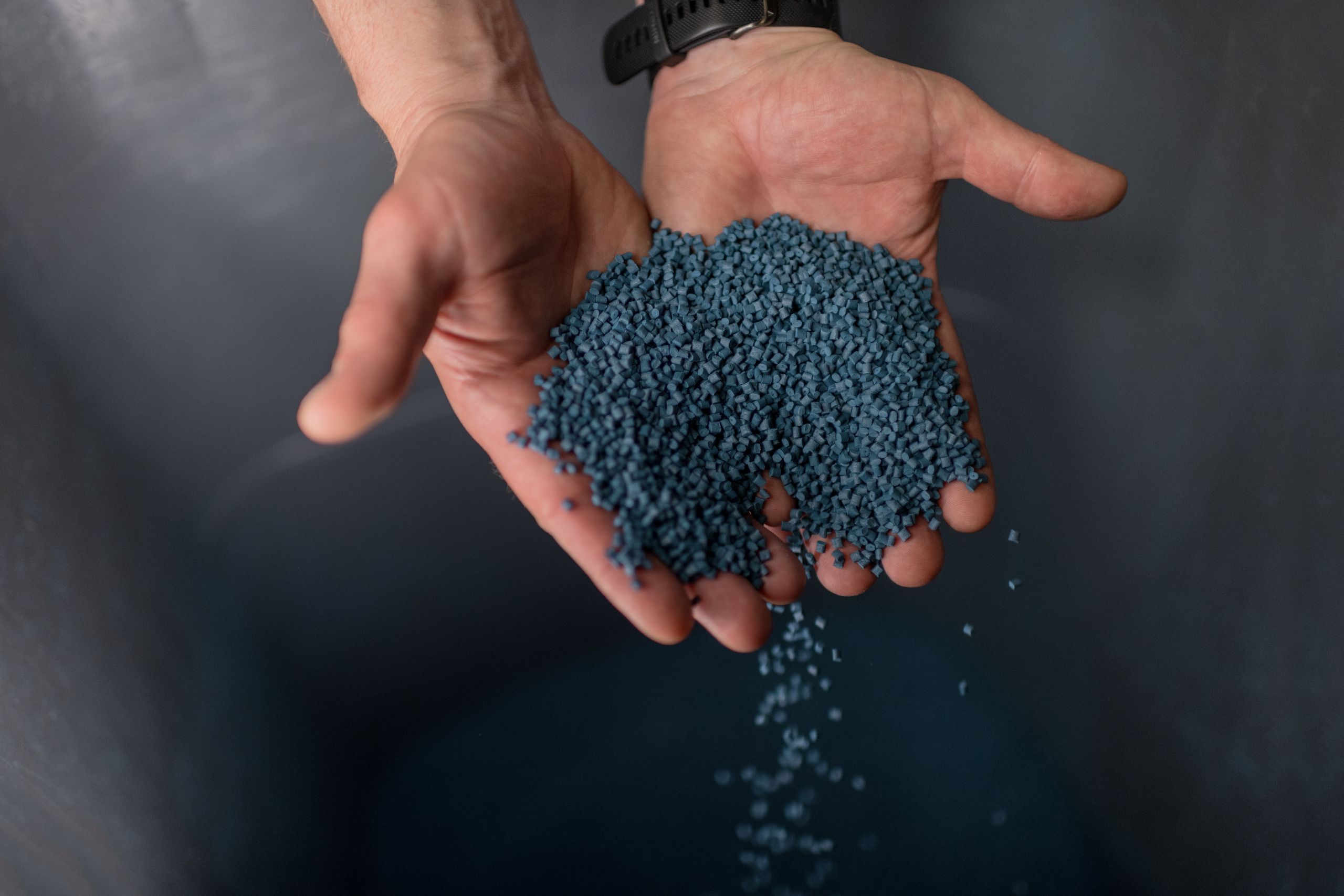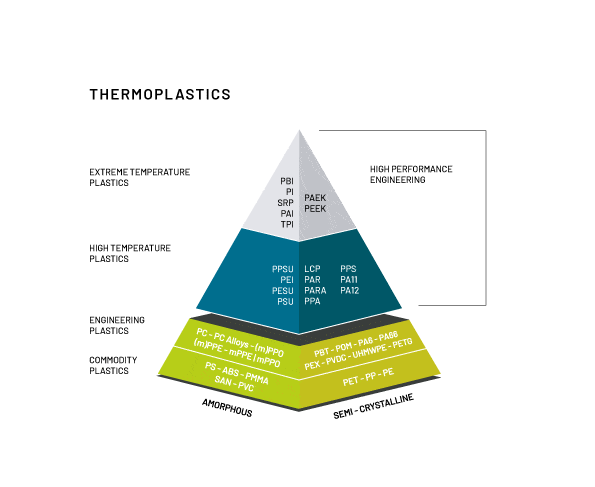
Plastics and innovations
Plastics and innovations
Plastics, synthetic materials and thermoplastics
A thermoplastic is the type of plastic that injection moulders like us process from granular form into finished products. We process thermoplastics for technical products that last a long time, known as durables. These activities should not be confused with the production of items such as single-use plastic bags, known as consumables or disposables. But where does the name plastic come from? Plastic can be either a noun (a type of synthetic substance) or an adjective (‘made of plastic’). The adjective plastic is derived from the Latin plasticus, ‘malleable’, in turn derived from the Greek plastikós, a derivation of plássein ‘form, knead’.
- What are plastics?
- Why use synthetic materials?
- Types of plastic
- Thermoplastics
- Thermoplastics have their advantages and disadvantages.
- Innovations
What are plastics?
Plastics are materials composed of very long molecules (polymers) created by chemical synthesis, an artificial manufacturing process. In the 19th century, natural substances such as cellulose from wood, straw or cotton, resin, human or animal proteins and blood formed the basis of the first plastics. These substances all consist of natural polymers, chains of identical or similar molecules.
By modifying these natural polymers (chemical synthesis), the first semi-synthetic plastics were created. The milk protein casein was the raw material for galalith and cotton cellulose acted as the raw material for celluloid. In its time, this was both a substitute for ivory and familiar as the material used for photographic film. It is still in use today for table tennis balls and guitar picks.
Plastics from the early 20th century are fully synthetic materials made artificially from hydrocarbons, organic compounds consisting only of hydrogen (H) and carbon (C) and derived from oil, through unnatural chemical reactions during an industrial process (oil refining). Bakelite (PF), developed by the Belgian-American inventor Leo Baekeland, used synthetic resin based on phenol and formaldehyde. This was the first synthetic plastic made from oil. This plastic did not conduct electricity and could withstand heat well. Applications included housings for electrical engineering, radio cabinets and door handles.
Why use synthetic materials?
New technologies and new products followed in quick succession, requiring new materials. The scarcity of natural raw materials and increased demands for new applications for the growing population led to a surge in synthetic plastics with different properties. These plastics could contribute more to comfort, safety, storage life, hygiene and energy efficiency.
Types of plastic
The types of plastic can be divided into three groups, namely thermosets, thermoplastics and elastomers. Bakelite is an example of a thermoset, remaining hard when heated. In contrast, thermoplastics such as polypropylene (PP) will soften when heated and can be remoulded into new products. The elastomers have rubber-like properties and are elastic. Thermosetting elastomers, including silicone rubber (SI), resemble thermosets in that they cannot be remoulded. In contrast, thermoplastic elastomers (TPE) are remouldable and are commonly used in 2K injection moulding techniques for integrated seals.
Thermoplastics
Many types of thermoplastics have been developed with different properties. These in turn can be divided into amorphous and crystalline thermoplastics. Amorphous thermoplastics have a disorganised structure and crystalline thermoplastics have an organised structure. Examples of amorphous thermoplastics include the transparent materials PS, SAN, PMMA and PC. Crystalline thermoplastics include PE, PP, POM, PA6, and PBT.
Thermoplastics have their advantages and disadvantages.
Thermoplastics have numerous advantages and are ideal for moulding and lightweight constructions. They therefore contribute to comfort, safety, storage life, hygiene and energy efficiency. Their advantageous characteristics include low specific gravity, chemical resistance, thermal and electrical insulation. The great design freedom makes it easy to integrate functions and eliminate assembly and post-assembly steps, thus achieving lower integral cost prices. Because of their huge weight savings, wide applicability and recycling potential, they contribute to low CO2 emissions and are very suitable as raw materials in the circular economy.
Of course, there are disadvantages too. The relative low melting point relative to steel causes the strength and rigidity to be reduced under the influence of temperature. This makes them prone to creep when loaded. Additives have been developed to improve these properties, but some of them are quite harmful to the environment. All these extra additions therefore have an adverse impact on circularity. It is important to handle the collection of plastics in general correctly, otherwise there will be more litter and further harmful impact on our ecosystem.
